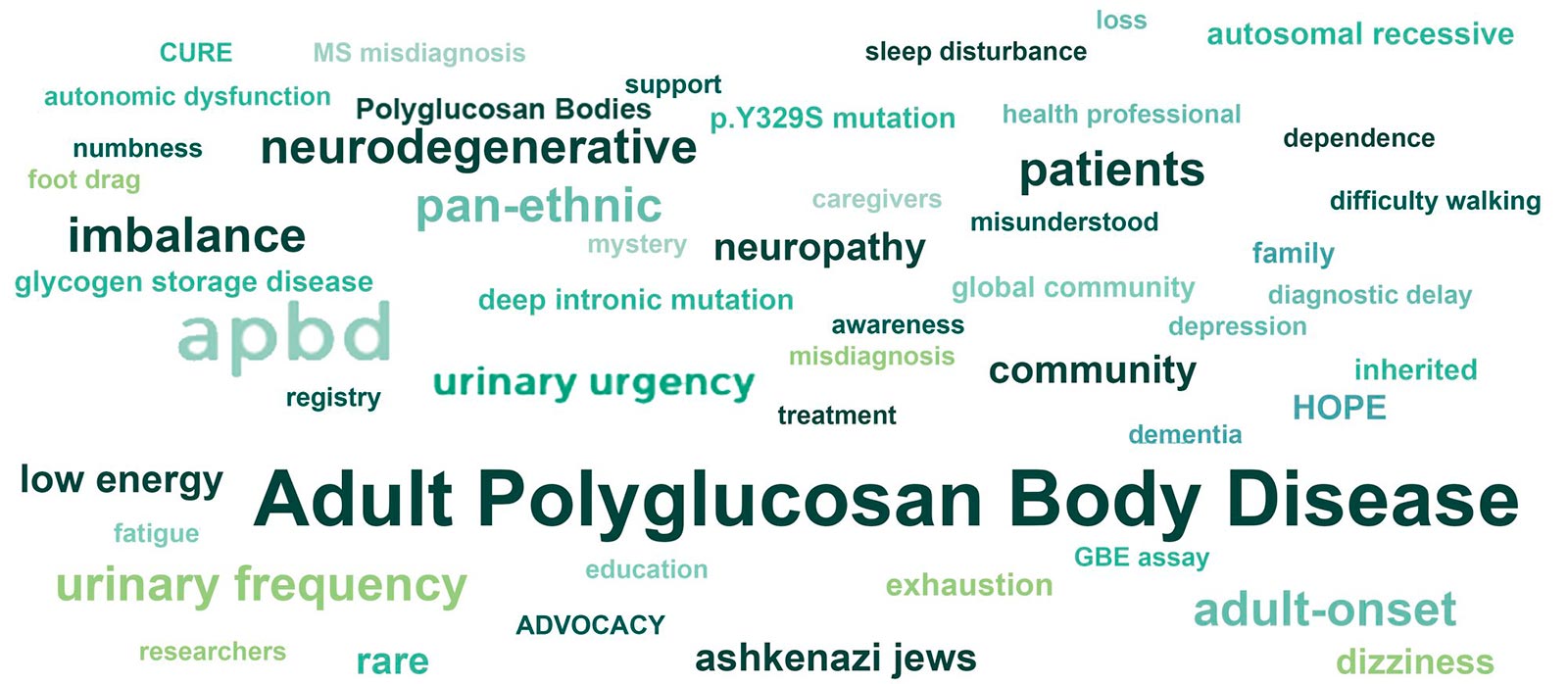APBD Signs and Symptoms
APBD symptoms include numbness and tingling in feet/legs and hands/arms (peripheral neuropathy), progressive muscle weakness and stiffness (spasticity), increasing difficulty starting or stopping the flow of urine (neurogenic bladder), fatigue, and — in about half of the cases — cognitive difficulties.
Individuals with APBD can begin experiencing symptoms as early as age 35. The symptoms can vary from person to person; and they can change or fluctuate over time. Individuals with APBD eventually lose the ability to walk, stand, stay continent, stay awake, perform at work, and socialize. They are robbed of nearly every aspect of their independent adult lives.

We recently asked our community to share in their own words how they describe APBD. This Word Cloud is a visual representation of their words.
Get research news updates from us!
Misdiagnosis is common
200 patients have been diagnosed, worldwide, to date. We believe there are many more undiagnosed patients. A study just published estimates the prevalence of APBD at the gene level at 3,400 for Ashkenazi Jews 50 years or over in the US.
APBD is pan-ethnic, but is diagnosed most frequently in people of Ashkenazi Jewish ancestry. It is frequently misdiagnosed as multiple sclerosis, cerebral small vessel disease, amyotrophic lateral sclerosis, or peripheral neuropathies.
The diagnostic delays and misdiagnoses in our community tell us we need to work with the MS, neuropathy, and other neurodegenerative communities that experience similar symptoms. Effective symptom management by an interdisciplinary team of healthcare professionals is one of the key components of comprehensive APBD care.
